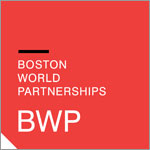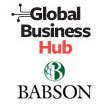PR in the age of social media, Reddit, BuzzFeed and content
When I started in PR in 1997, the “online version” was a nice-to-have, we blast-faxed press releases and mailed hard copy press kits. In the mid-2000s, bloggers threw this approach on its head (see the infographic at the end of this piece) by shortening deadlines, expanding news reporting to all hours of the day, breaking embargoes and having sharp opinions. In 2011, there were 164 million blogs, up from 3 million in 2006.
Facebook debuted in 2004, and social media made it possible for organizations to have conversations more directly with their audiences. Today, Facebook has one billion active monthly users and Twitter has 200 million. Social media moved PR metrics from impressions to engagement and influence. And now, social media is once again fundamentally changing the news as we know it. The opportunity for successful PR campaigns has never been greater, but the old tactics don't work anymore.
Breaking News
Today breaking news lives in the minute, and sometimes the second. It changes based on new information and new points of view. These come from media reporting, but also take shape through social interactions and commentary from trusted (and sometimes untrusted) sources.
The media coverage of the Boston Marathon bombings highlighted how breaking news has changed. Sites such as Reddit and BuzzFeed played prominent roles by funneling trending information and theories. Consider this: Reddit had 400 million unique visitors in 2012, and BuzzFeed’s unique visitors grew from 30 million to 65 million between January and April, while the evening news has 22.5 million viewers.
The Boston press shined that day. The country, including President Obama turned to them for the facts. Local influencers also played important roles in documenting the breaking news. MIT’s Seth Mnookin provided a now-famous account of the chaos the night of April 18 at MIT. He live tweeted all night. And of course, the Boston Police Department provided an amazing example of live updates via Twitter. It’s how I first learned that Dzhokhar Tsarnaev was in custody:
Suspect in custody. Officers sweeping the area. Stand by for further info.
— Boston Police Dept. (@Boston_Police) April 20, 2013
In the wake of tragedies like this, PR should not have a role. Unfortunately, the marathon gave us a lot of bad examples. For other breaking news, there is an immense opportunity for participation in important discussions. Effective breaking news PR campaigns hinge on four things:
1. Finding the news before it’s over. You need a listening post that spans traditional and social media. Google News Alerts just won’t cut it.
2. Being there first. First means within minutes, not hours. Second-day news is today’s second-hour news.
3. Providing a compelling and unique point of view. Be a trusted source. This can’t be done overnight, but needs to be earned over time, through consistent exposure and thoughtful contributions.
4. Thinking beyond the media. Breaking news happens in multiple places. Find the right Twitter hashtags. LinkedIn group discussions, comments on blogs, etc.; then engage with your perspective. Just don’t engage with your marketing brochure!
Content is PR Currency
In parallel to, and partly because of the changing business of the news, the door for content has flung wide open. There are a wide array of opportunities – contributed posts, e-books, videos, data visualization and all sorts of variations on these themes. For example, in April, Twitter’s video-sharing network, Vine, became one of the fastest-growing sites in America, hitting second place on Compete.com’s fast mover list.
Not all content is created equal, and it comes in many forms. Successful content must convey a unique point of view that is anchored in authority. Remember the tenets of good storytelling – data slapped together does not make for good content. It has to follow a compelling narrative. And if you mind the wisdom of BuzzFeed, “The Internet. Loves. Lists.”
Then publish that content. Make your website a destination for your audiences by talking about how you think instead of what you do – this is what a blog is made for, and it still works when done properly. Contribute posts and articles to the wide range of the media outlets that are seeking thoughtful content. There are too many to list here, but a few prominent outlets include Boston.com, Huffington Post, Forbes, BuzzFeed (they just debuted a “Community” section), The Atlantic Monthly’s Quartz, and TechCrunch.
However, great content alone is not enough. The “build it and they will come” approach only works for people like Bill Clinton, who joined Twitter on April 6 and already has more than 643,000 followers. For everyone else, you need to build an audience for your content. Be active on the social channels that reach your audiences. Why? The tide is shifting. According to Pew, almost 25 percent of people between the ages of 18 and 29 rely on social media as their primary source of news.
A client recently said that he encourages his team to embrace change as a gift. Jokingly, I quipped, “I work in PR. The only certainty is that everything will change by tomorrow.”
Beth Monaghan is principal and co-founder of InkHouse Media + Marketing, a PR and social content agency based in Waltham, Mass. She blogs about PR and content at InkLings and you can find her on Twitter @bamonaghan.
The author is solely responsible for the content.
Meet Boston's coolest, smartest and most dynamic founders in our REEL Innovators video series!







